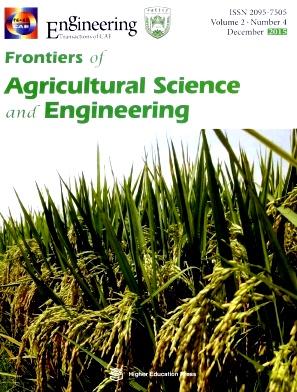以牛粪为原料的生物质气化数值模拟
IF 2.8
4区 农林科学
Q1 AGRONOMY
引用次数: 0
摘要
摘要本研究利用Aspen Plus软件建立了基于Gibbs自由能最小化的生物质气化模型,并进行了数值模拟。两个反应堆,RYIELD和RGIBBS,被广泛使用。所使用的生物质原料为牛粪。对模型进行了验证。通过改变气化温度、蒸汽和生物质比以及压力等操作参数,估算了合成气体(也称为合成气)的组成、h2 /CO比和低热值(LHV)。模拟结果表明,提高气化温度有助于提高h2和CO含量,h2在900℃时达到峰值。当蒸汽作为气化剂增加时,h2产量增加。然而,蒸汽/生物质(S/B)比对CO和ch4有负面影响,导致LHV降低。最佳S/B比为1.5。随着气化压力的增加,h2和CO含量降低,气化的最佳压力为0.1 MPa。本文章由计算机程序翻译,如有差异,请以英文原文为准。
NUMERICAL MODELING OF BIOMASS GASIFICATION USING COW DUNG AS FEEDSTOCK
ABSTRACT In this study, a biomass gasification model was developed and simulated based on Gibbs free energy minimization by using software Aspen Plus. Two reactors, RYIELD and RGIBBS, were moslty used. The biomass feedstock used was cow dung. The model was validated. The composition, H 2 /CO ratio and low heating value (LHV) of the resulting synthetic gas (also known as syngas) was estimated by changing the operating parameters of gasification temperatures, steam and biomass ratios and pressures. Simulation results showed that increased gasification temperature helped to elevate H 2 and CO content and H 2 peaked at 900 °C. When steam increased as the gasification agent, H 2 production increased. However, the steam/biomass (S/B) ratio negatively affected CO and CH 4 , resulting in lower LHV. The optimal S/B ratio was 1.5. An increase in pressure lead to a decrease in H 2 and CO content, so the optimal pressure for gasification was 0.1 MPa.
求助全文
通过发布文献求助,成功后即可免费获取论文全文。
去求助
来源期刊
CiteScore
5.10
自引率
2.70%
发文量
33
期刊介绍:
Frontiers of Agricultural Science and Engineering (FASE) is an international journal for research on agricultural science and engineering. The journal’s aim is to report advanced and innovative scientific proceedings in agricultural field including Crop Science, Agricultural Biotechnology, Horticulture, Plant Protection, Agricultural Engineering, Forestry Engineering, Agricultural Resources, Animal Husbandry and Veterinary Medicine, Applied Ecology, Forestry and Fisheries. FASE is committed to provide a high level scientific and professional forum for researchers worldwide to publish their original findings and to utilize these novel findings to benefit the society.

 求助内容:
求助内容: 应助结果提醒方式:
应助结果提醒方式:


